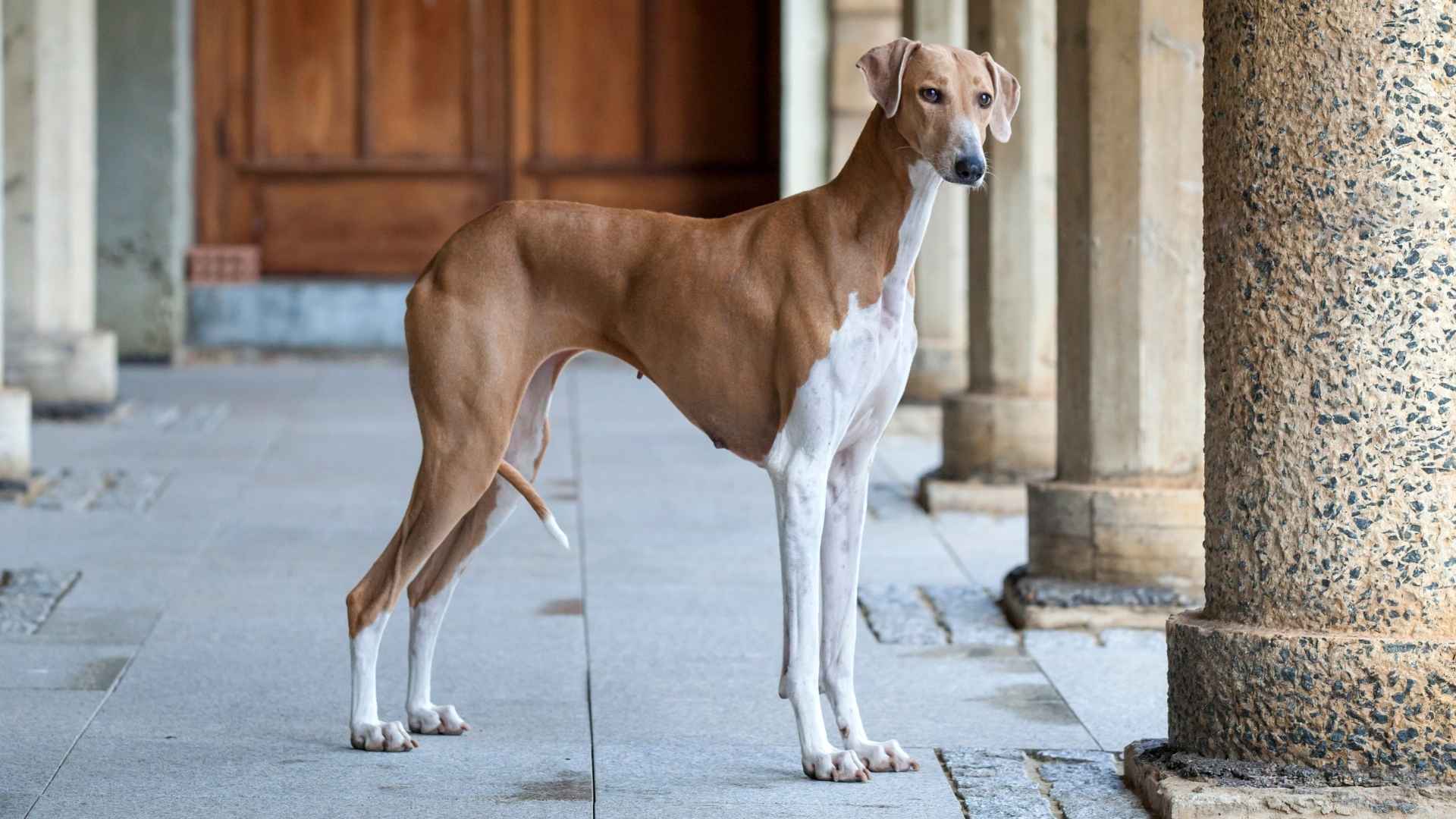When you think of dogs, familiar faces like Golden Retrievers or French Bulldogs probably pop into your head. But what about the pups you don’t see at the dog park — the ones so rare that most people have never even heard of them? Welcome to the wonderful world of the rarest dog breeds — a collection of canine companions as unique as they are adorable.
These under-the-radar dogs hail from remote corners of the world, come with fascinating histories, and often have one-of-a-kind traits — think webbed feet, extra toes, or even a talent for sniffing out truffles. Some are so scarce they’re barely recognized by major kennel clubs, making them true four-legged treasures.
Whether you’re a dog lover, breed buff, or just someone who loves discovering new furry faces, you’re in for a treat. Let’s dive into the rarest breeds in the world that are stealing hearts — quietly, but irresistibly.
Most Rare Dog Breeds
1. Azawakh
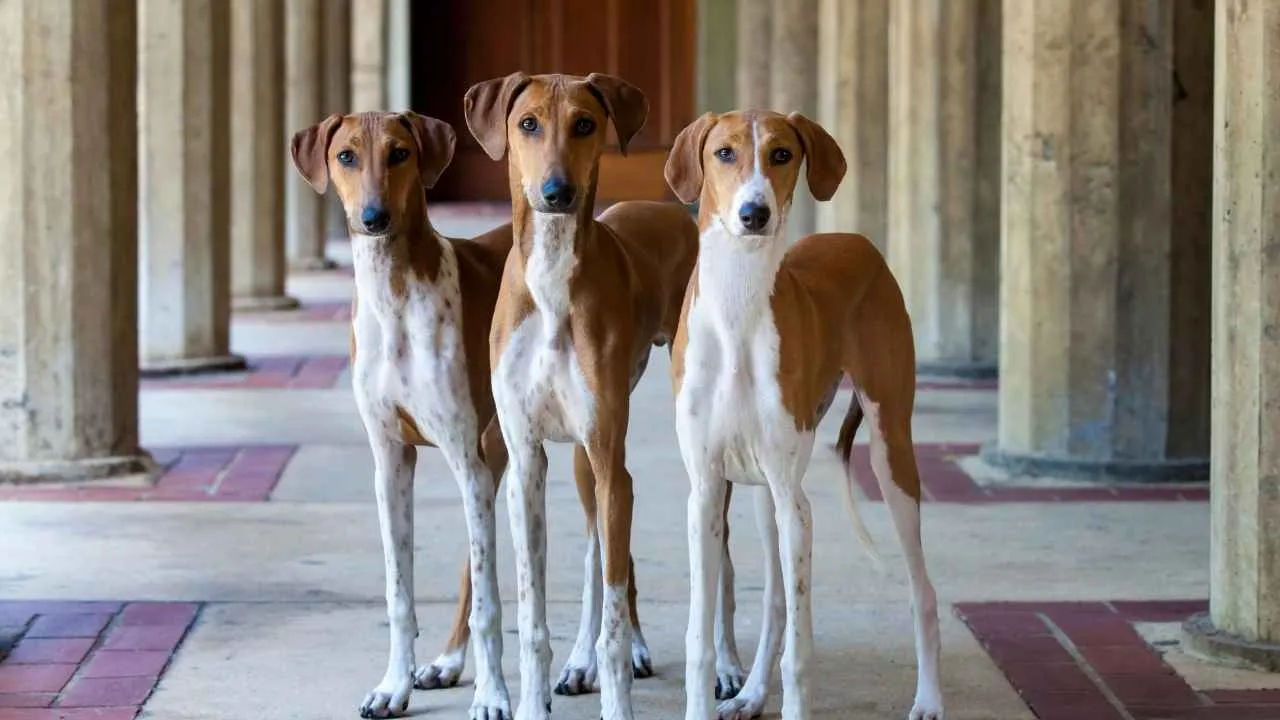
Straight out of West Africa’s Sahel region, the Azawakh (also known as the West African sighthound ) is part runway model, part survival expert. Originally bred by the nomadic Tuareg people, these rare sighthounds weren’t just pets—they were hunters, protectors, and excellent companions in harsh desert conditions.
With long legs, a lean frame, and a sleek coat, Azawakhs look like living sculptures. But they’re built for speed and stamina, effortlessly hitting 40 mph and gliding across terrain like four-legged athletes. Don’t be fooled by the elegance—these dogs mean business.
Low-shedding and low-maintenance, their fine coat is a dream for neat freaks. But fair warning: that sighthound prey drive is strong. Small pets? Proceed with caution.
PetMD states that Azawakhs are athletic dogs and also strong-willed, intelligent, and a bit aloof. They won’t grovel for attention or obey on command—they’ll cooperate if they respect you. Loud homes and harsh training won’t work here; calm, confident leadership wins the day.
While they keep strangers at a graceful distance, Azawakhs are deeply loyal to their inner circle. Think of them as sleek, silent bodyguards—watchful, poised, and always camera-ready.
Fact Check
To be fair, the Azawakh isn’t everyone’s ideal dog. They’re not overly cuddly, they don’t aim to please, and they won’t perform party tricks on command. But if you’re someone who respects a strong personality, appreciates rare beauty, and has a soft spot for dogs that march to the beat of their own pawprints, this rare breed might just be your perfect match.
2. Otterhound
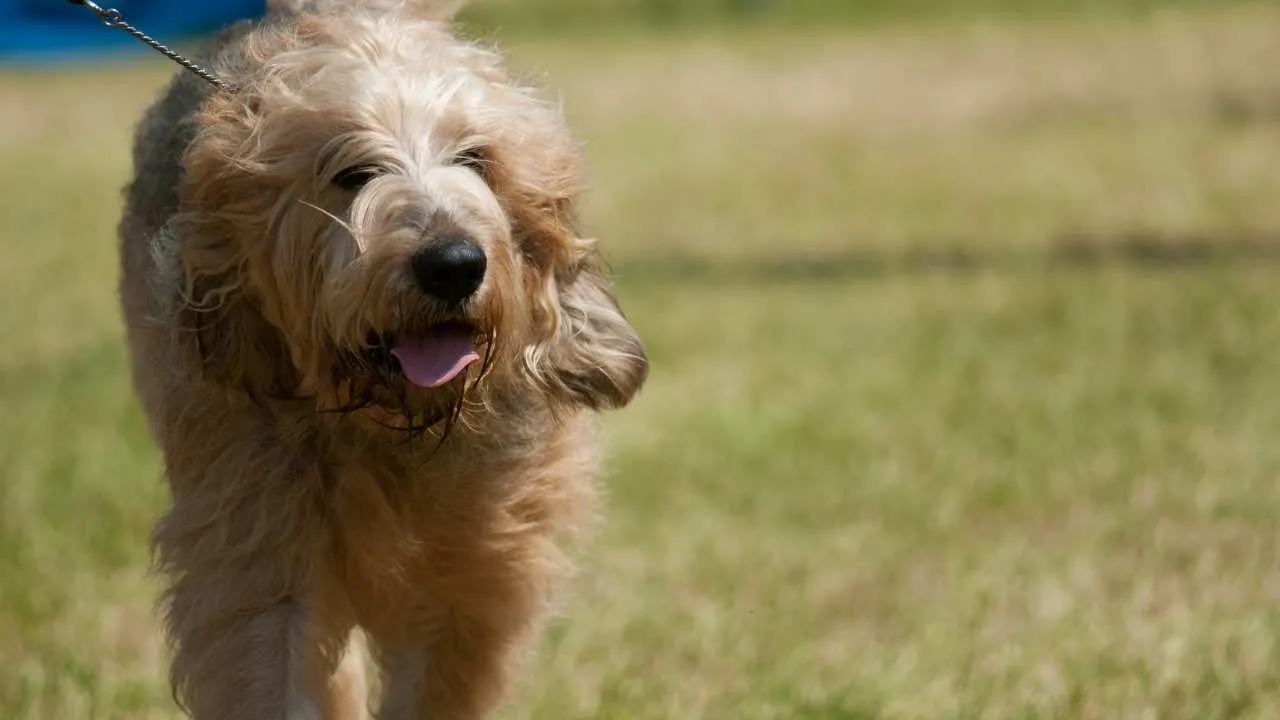
The Otterhound might not be a household name today, but once upon a time, this shaggy, web-footed wonder was a superstar of the English countryside. With roots stretching all the way back to medieval times, these hounds were prized for their incredible otter-hunting abilities (yes, that was a real job).
Fast-forward to the present, and the Otterhound is now one of the rarest breeds on the planet, with fewer than 1,000 registered worldwide. Talk about an underdog story.
At first glance, you might think you’re looking at a doodle or some quirky mix, but nope—this is simply a rare breed of ancient, scent-hunting hounds. WebMD states that otterhounds are big, boisterous, and built for the water. With webbed feet, a waterproof coat, and a nose that could probably sniff out snacks from three towns over, they were born to splash and track.
Why Otterhounds Are Rare
Otterhounds are gentle giants with a goofy charm and an eagerness to play, making them perfect companions for active families—if you can find one. Despite their winning personalities, Otterhounds are ridiculously rare today, which honestly feels like a crime against dogkind.
3. Norwegian Lundehund
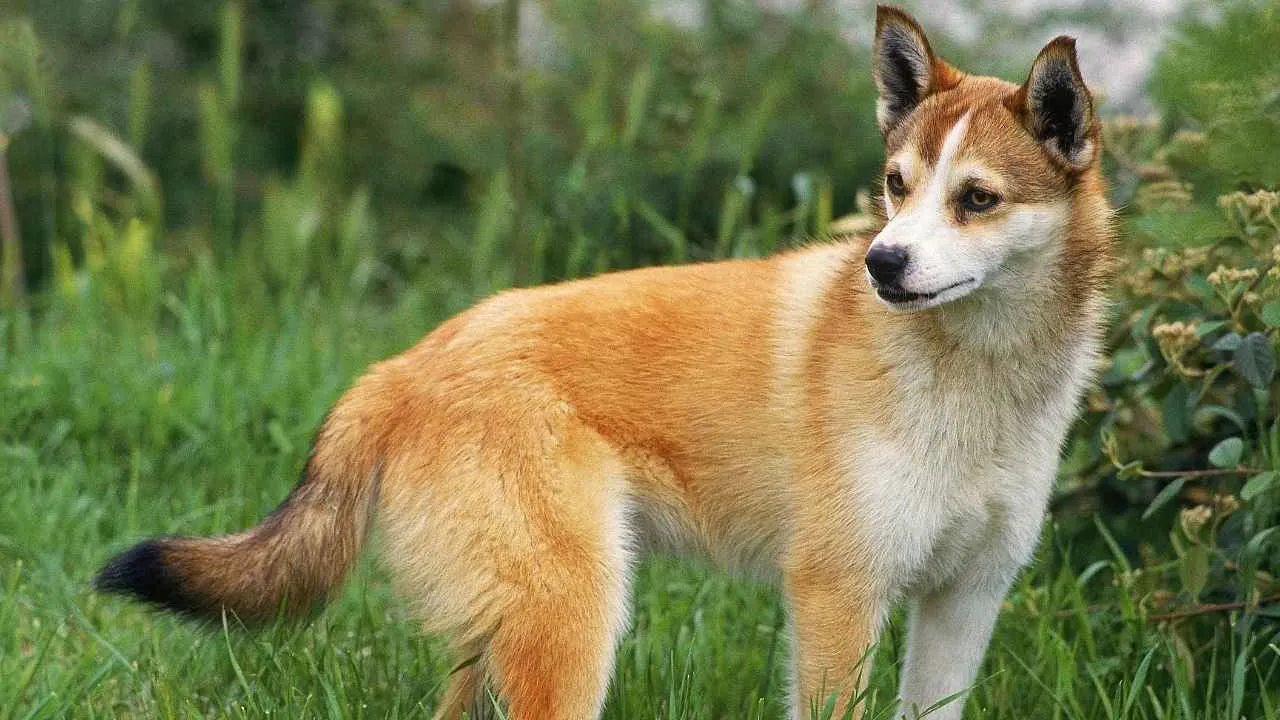
Meet the Norwegian Lundehund—quite possibly the most bizarre (and brilliant) dog you’ve never heard of. Hailing from the rugged coastal cliffs of Norway, this small-but-mighty puffin hunter was bred to do what no other dog could: scale vertical rocks and snatch birds from their nests without breaking a sweat—or a toe.
Lundehunds were once a prized part of the local economy in Norway’s Lofoten Islands. Their job? Climb steep cliffs and bring home puffins, which were an important food source at the time. Back then, families would keep packs of these agile climbers, like a squad of feathery-seeking ninjas.
But as bird nets and new hunting methods took over, the dogs’ numbers plummeted. By World War II, canine distemper had nearly wiped them out completely. Thankfully, a few determined fans gathered the remaining pups and said, “Not today, extinction!”
While the Lundehund is still incredibly rare, it’s hanging in there thanks to conservation efforts. It joined the American Kennel Club’s Foundation Stock Service in 1996 and finally got full recognition in 2011.
These pups aren’t clingy lapdogs—they’re a little aloof, maybe a touch quirky, but totally down for a good hike or adventure. If you like your dog’s weirdness in the best way possible, this Norwegian oddball just might steal your heart (and maybe your socks).
Six Toes and a Superpower
As noted by AKC, the Lundehund has six functioning toes on each foot. Yes, you read that right—six. That’s more traction than a hiking boot. Add in super-flexible joints, elongated paw pads, and a neck that can bend backwards until its head touches its spine, and you’ve got a canine built like a yogi on Red Bull.
Oh, and its triangular ears? They fold closed like tiny shutters to keep out dirt and water. Basically, this dog is a walking Swiss army knife.
4. Mudi
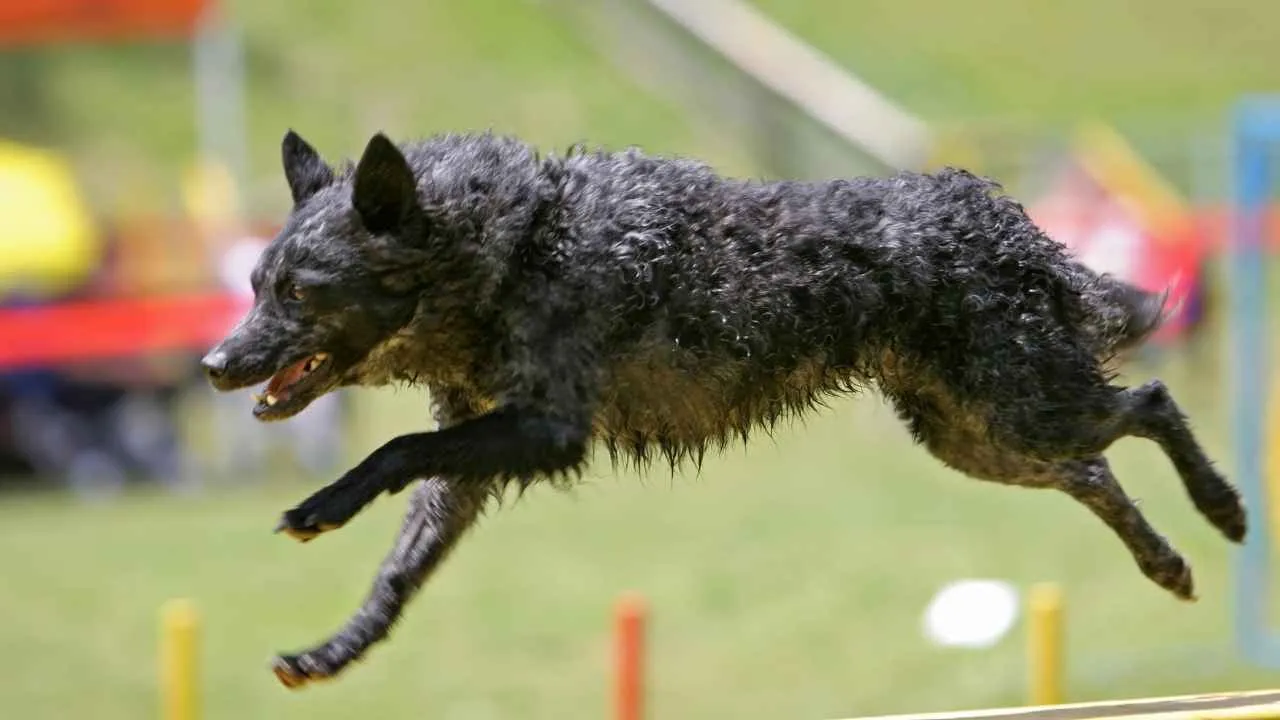
Ever heard of the Mudi? Don’t worry, most people haven’t—and that’s exactly why they’re one of the rarest dog breeds around. With only a few thousand in existence (less than 500 in the U.S.!), spotting one is like finding a four-leaf clover doing backflips.
Mudi is a Hungarian herding dog, originating from the same furry family tree as the Puli and Pumi. After World War II nearly wiped them out, Hungarian breeders rallied to bring them back from the brink.
By the 1960s, they had a new breed standard and a fresh start—but even with their cool merle coats and versatile size range, Mudis never really became a household name.
Why Are Mudi Dogs So Rare
Hint: It’s not because they’re picky about friends.
Mudis are energetic, quick, and brainy working dogs. Give them a yard or a task, and they’ll thrive. Without regular exercise, they may turn your living room into a disaster zone. However, with proper stimulation, they’re affectionate, obedient, and easy to groom.
Fun Fact
These clever canines hail from Hungary and are considered national treasures, even getting their own postage stamp in 2004. Fancy, right?
5. Canaan Dog
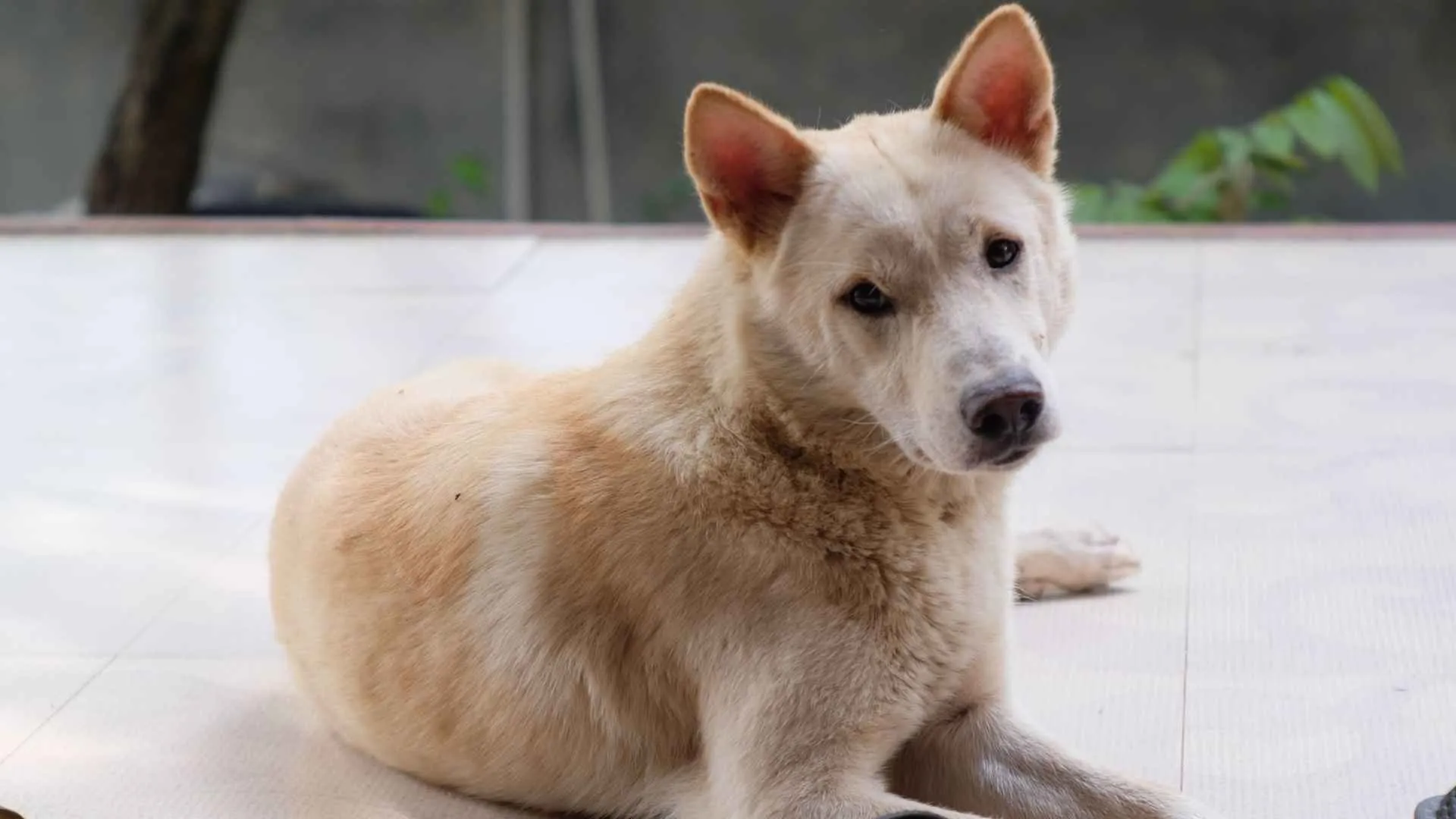
Meet the Canaan Dog—a rare, medium-sized pooch with a history longer than most civilizations. Hailing from the Middle East, this breed sports a short coat, bushy tail, upright ears, and a square build that says, “I mean business.”
This desert survivor dates back thousands of years—no, really, we’re talking biblical times. Ancient artifacts show dogs resembling today’s Canaan, once used for herding and guarding livestock and guarding camps.
After the fall of Jerusalem in 70 A.D., many were left behind and went back to their wild roots, surviving untouched until the 20th century when humans decided, “Hey, maybe we could use these clever canines again.” Spoiler alert: they were right.
Canaan Dogs quickly proved they were more than just a pretty face. With sharp instincts and a strong work ethic, they’ve served as military dogs, landmine detectors, and even wartime messengers.
Canaans are deeply devoted to their families and surprisingly affectionate dogs once you’re in their circle of trust. But they’re not exactly pushovers. Thanks to their semi-wild ancestry, they’re naturally territorial, a little aloof, and won’t tolerate nonsense. With the right positive reinforcement, they respond beautifully to training.
While they can get along with older, respectful kids, Canaan Dogs aren’t usually fans of chaotic households filled with tiny, grabby hands. They’re more of a “watch the yard while you sip coffee” kind of companion than a “toddler’s best friend” type.
Fact
Known for being Israel’s national dog, the Canaan is loyal to its people and suspicious of just about everyone else. In other words, it’s not the type to wag its tail at every stranger on the sidewalk.
6. Cesky Terrier
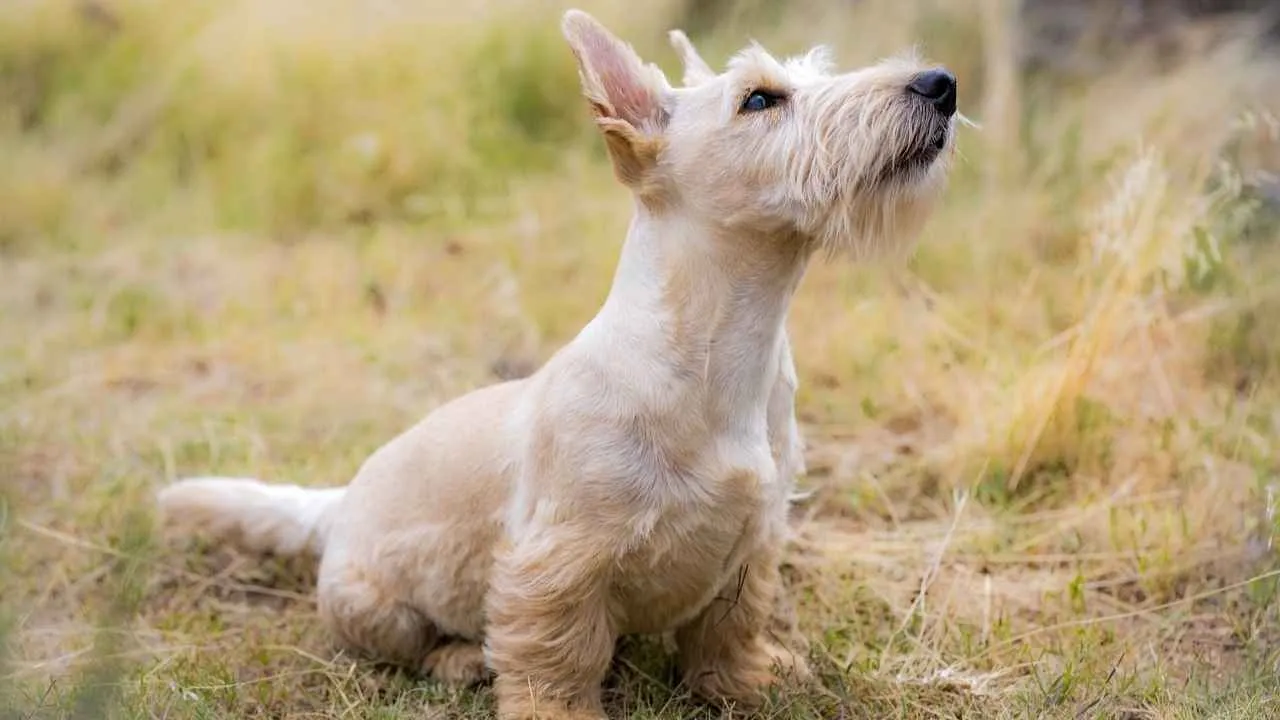
Say hello to the Cesky Terrier (that’s “chess-kee,” for the record)—a pint-sized powerhouse from the Czech Republic with the heart of a hunter and the hair of a supermodel. This rare little breed was designed with a purpose—literally.
In 1948, Czech geneticist František Horák set out to create the ultimate hunting companion: a tenacious terrier that was a little less scrappy, a little more manageable, and easy on the eyes. The result? A cross between the Scottish Terrier and the Sealyham Terrier that gave us the dapper, silky-coated Cesky.
Originally bred to sniff out rabbits and foxes in the Czech countryside, the Cesky quickly proved it was more than just a pretty face. With a soft coat in dreamy shades of gray (think smoky platinum to charcoal chic) and distinguished features like a beard and flowing eyebrows, this breed has an air of quiet sophistication—if quiet sophistication came with short legs and a digging habit.
Ceskys are low to the ground, topping out around 13 inches tall, and weigh a comfy 16 to 22 pounds, making them a great fit for homes of all sizes, as long as there’s room to dig.
Ceskys aren’t just working breeds; they’re family dogs through and through. They’re loyal to their humans, though they tend to be a little reserved with strangers (a trait that only adds to their mystique). Early and ongoing socialization helps smooth out any aloof edges.
They just love staying active—whether it’s through a daily romp in a secure yard or activities like agility, earth dog trials, and obedience work. Bonus points if there’s something to chase—or dig under.
Cesky Fact
Officially recognized by the FCI in 1963 and the AKC in 2011, the Cesky remains a rare gem of the dog world. Elegant, clever, and full of personality, this breed isn’t for everyone, but for those lucky enough to know one.
7. Finnish Spitz
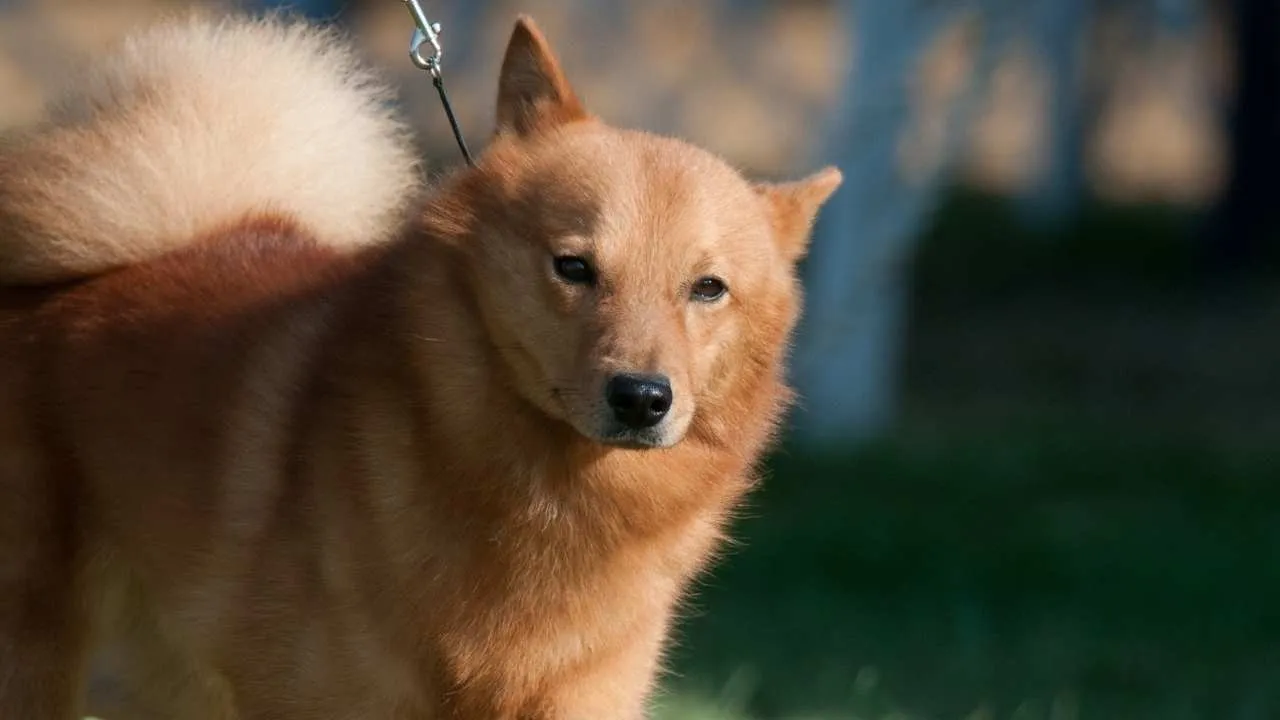
Meet the Finnish Spitz—Finland’s fiery red gem and one of its oldest dog breeds, with roots going back over 2,000 years. Originally brought by Russian migrants, these clever pups were raised in the forest and used as all-purpose hunters before earning their spotlight as expert bird dogs.
Famed for their unique yodel-like bark (up to 160 times a minute!), Finnish Spitz dogs signal gamebirds while wagging their tails to distract prey. They can also navigate rough terrain and retrieve waterfowl, proving their versatility in the field.
With classic spitz features—perky ears, almond eyes, a fluffy curled tail, and a golden-red double coat—they resemble foxes in autumn hues. Born black, they lighten as they grow, sometimes flaunting a chest stripe or white toe markings.
Loyal, lively, and affectionate, they bond deeply with their humans and adapt well to family life. Training, however, takes patience—they’re smart but independent, so keep sessions fun and positive. And yes, they’re vocal, so early bark training is key.
Charming, energetic, and rare dog breed outside of Finland, the Finnish Spitz is a spirited companion with a heart as bold as its bark.
Fun Fact
The AKC rates them moderate on the trainability scale, which is a polite way of saying, “They’ll do it when they feel like it.”
8. Lagotto Romagnolo

Meet the Lagotto Romagnolo—Italy’s curly-coated truffle specialist with a nose like no other. Originally bred in the 16th century as a water retriever, this clever pup transitioned into truffle hunting by the 1800s, thanks to its sharp senses and laser-like focus.
With its soft, woolly curls and waterproof coat, the Lagotto is as charming as it is practical. Bonus points: they rarely shed, making them ideal for allergy-prone homes. Just keep up with regular trims—those curls don’t manage themselves!
Though nearly lost to crossbreeding in the 1970s, the Lagotto has made a triumphant return in Europe. Still a lesser-known breed in the U.S., this curly gem is a true treasure for dog lovers lucky enough to find one.
Aside from its impressive résumé, the Lagotto is an absolute sweetheart. Friendly, loyal, and ridiculously easy to train, this pooch is a total people-dog. They’re affectionate without being clingy, protective without being aggressive, and gentle enough to be great with both kids and other pets.
Honestly, they’re like that friend who brings snacks to the party and helps clean up after. Just don’t leave them alone too long—they thrive on companionship and lots of TLC.
9. Polish Lowland Sheepdog
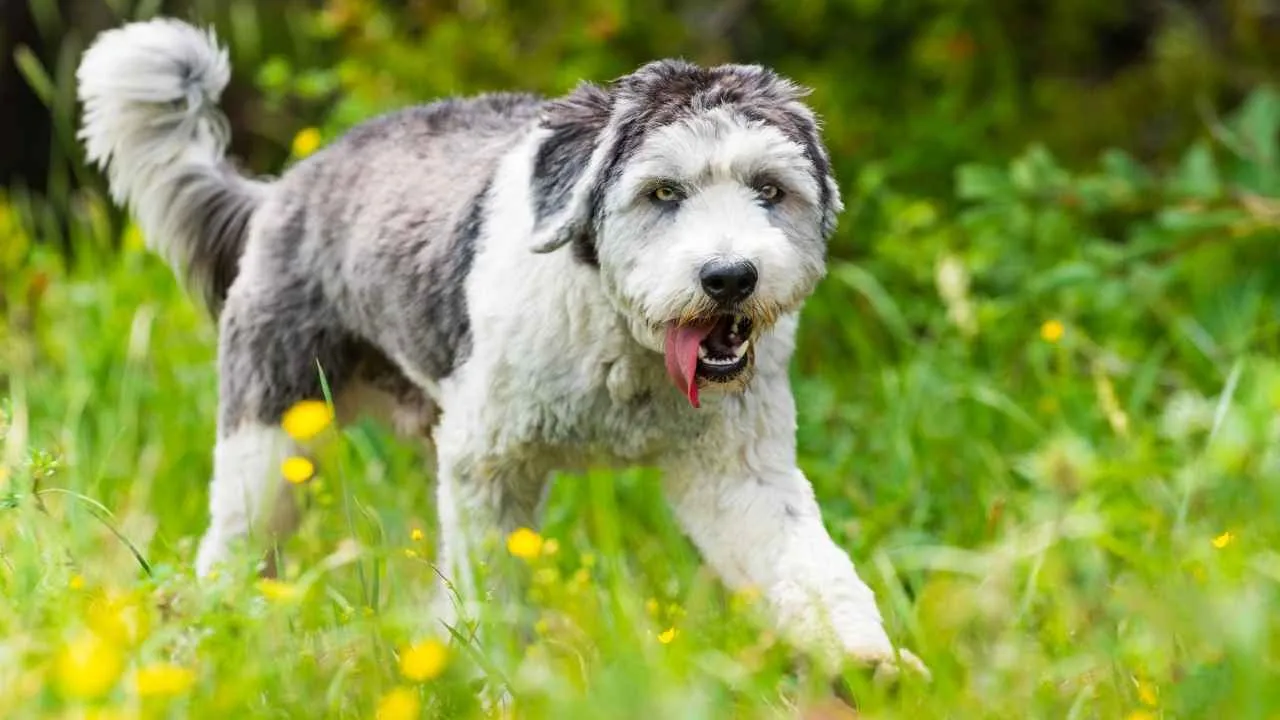
Nicknamed the “shaggy herder,” the Polish Lowland Sheepdog is basically a walking, barking cloud with a job to do. That mop-like, dense coat isn’t just for show—it helped this breed brave the elements while working the pastures of Poland, herding sheep like a pro. And with all that hair covering their eyes, these dogs relied more on listening than looking. Voice commands? They’re fluent.
Structurally, the Polish Lowland Sheepdog is compact and solid, with a frame built for endurance. Their smooth, long stride and even an adorable little amble help them trot for hours without tiring. And yes, their bark is loud, proud, and ready to report every squirrel, doorbell, or suspicious-looking leaf. Consider it part of their charm.
Don’t be fooled by the fluff—Polish Lowland Sheepdogs are sharp, independent, and a bit mischievous dogs. Their clever minds need constant engagement, or they’ll find ways to entertain themselves (like herding you around the house).
The Polish Lowland Sheepdog is smart and independent, learning quickly but preferring purpose over blind obedience. At home, they’re affectionate and playful with family, good with respectful kids, and naturally cautious around strangers.
With the right care, regular grooming, and proper socialization, they become loyal companions without being overly aggressive.
Conclusion
Rare dog breeds, like the Guinea Singing Dog, New Guinea Singing Dog, and Tibetan Mastiff, offer unique traits and fascinating histories. Breeds like the Catahoula Leopard Dog, Carolina Dog, and Thai Ridgeback are renowned for their hunting skills and working roles, while the Bedlington Terrier and Skye Terrier add a mischievous charm.
Many other breeds, including the Peruvian Inca Orchid and American Dingo, have deep roots in indigenous cultures and regions like South America and Australia. Despite challenges like severe inbreeding, breeds like the Belgian Laekenois are gaining popularity, showcasing the diverse roles, from hunting small game to guarding livestock, that these athletic and hardworking dogs have played throughout history.


